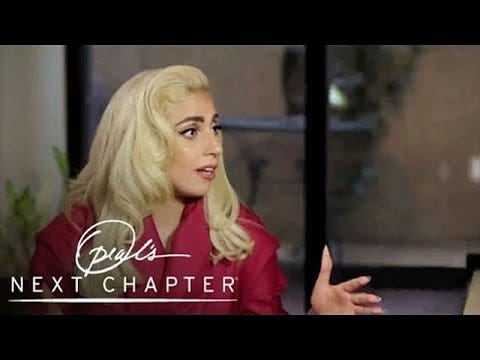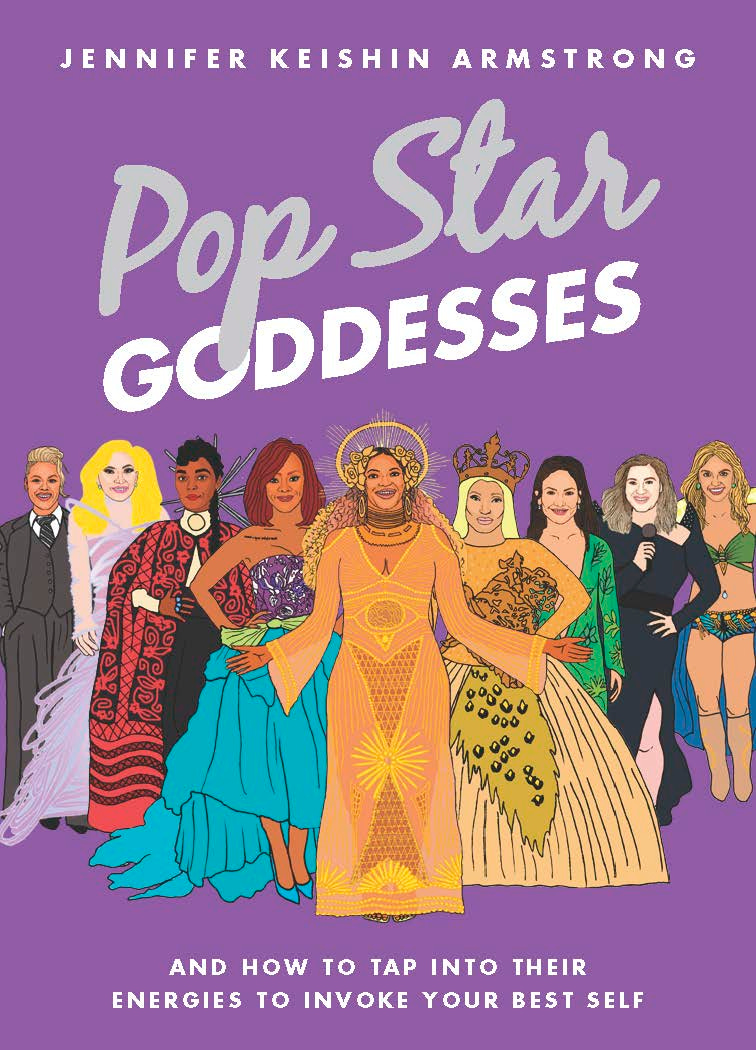How to Be Creative Like Lady Gaga
Pop stardom can be performance art ... and so can everyday life.
Lady Gaga perfected the idea of pop stardom as performance art. From the beginning, she drew attention for her outlandish costumes (the meat dress!) and provocative stagings (fake-bleeding to death while singing “Paparazzi” at the 2009 MTV Video Music Awards), along with her carefully calibrated songs that showed she was a student of Top 40 songwriting. Gaga (neé Stefani Germanotta) revealed little of her real self, and, instead, took another approach to interviews, like when she dressed like Barbara Walters for her interview with the legendary newswoman.
Gaga seemed determined to engineer a pop star career by studying the pop stars that came before her, constructing a persona designed to succeed without obliterating herself as a person. And it seemed to work. mostly. You can best see this in action in her 2017 documentary Gaga: Five Foot Two. In it, she is attempting an image change of sorts for her album Joanne, which is more Americana than the dance music fans are accustomed to hearing from her. Her creative director, Ruth Hogen, asks her about her fashion vision for this era. Gaga says, “This album, in particular, I want everything to come out of that studio, and that girl. Because when we stay with her, she’s the gold.” Gaga answers this question fearlessly, and topless, by her pool.
What’s most remarkable about her, as her career continues, is her willingness to try new things. “We’ve seen me fucking glamorous for almost ten years, it’s boring,” she says in the documentary. “It really is boring.” Perhaps the best indicator of her creativity is her record of failure: Joanne wasn’t a huge hit, but it’s my favorite album of hers, and probably plenty of other people’s favorite, too. (Mine? Yes!) The recent Joker movie in which she stars has been a bust. But she doesn’t want to keep giving people the same thing, even if that’s what they want.
In my book Pop Star Goddesses, which I have been revisiting lately in an age of new PSGs, I celebrated Gaga as the Goddess of Social Justice, which still holds true—she continues to be charitable and outspoken about progressive causes. But her artistry and willingness to take chances with it has become even more apparent over the last four years, as she has deftly balanced pleasing her audience (with the return-to-form dance-pop of Chromatica) and taking on what interests or challenges her.
Here, some of the things I’ve learned from studying Lady Gaga’s career:
Your appearance can be an effective part of your art.
Obviously any major pop star knows this, and at minimum aims to look great. But few have perfected this like Gaga. When she wanted to provoke, she wore a meat dress. When she wanted to make her performance of “Paparazzi” meaningful, she gushed fake blood. When she wanted to keep the focus on her music and its more personal messages with Joanne, she wanted to look less remarkable, more like her everyday self. While none of us is about to craft some raw steak into an outfit, we can put this principle to some use in our more regular lives, whether that’s dressing to reflect the themes of a presentation or to better connect with the people with whom we have a business meeting. I mean: Gaga dressed like Barbara Walters!
Have a routine, and a schedule, no matter where you are.
Just because Gaga is wildly creative and willing to take risks with her work doesn’t mean she’s not into something as boring and monotonous—and beneficial—as a routine. In fact, it’s from this discipline that she’s able to create. This is something I know I should be doing better, and the fact that she has mastered it with a much more chaotic life than my own is an inspiration. She gets up at 6 a.m. to practice mindfulness and have breakfast, then writes music from 7:30 to 8:30 a.m. I love this in particular, the way she makes room for her creative practice every day, before things get too hectic, instead of resting on her laurels. The middle of the day is for self-care, workouts, and prepping for a show, if she has one that night. While in transit for the next show, she deals with communications and other administrative stuff. So grounded, so productive.
Approach each piece of your artistic work as a “project.”
This felt game-changing to me once it sank in: The woman born Stefani Germanotta made herself into “Lady Gaga” as a project that has lasted, likely long after she imagined it could. But this is brilliant; if it had failed, it would not have been “her,” but the project. Similarly, I’ve recently seen Chappell Roan speaking of her own pop stardom as a “project,” and specifically expressing the need to draw boundaries around that “project.” (Real name: Kayleigh Rose Amstutz.) There’s something about the high camp of both acts that makes this feel more tenable, but we can all apply it in our own lives. I, for instance, want to approach my desire to appear at local open mics as an art “project,” which makes it feel more accessible than a total baring of my soul on a stage in front of strangers.




